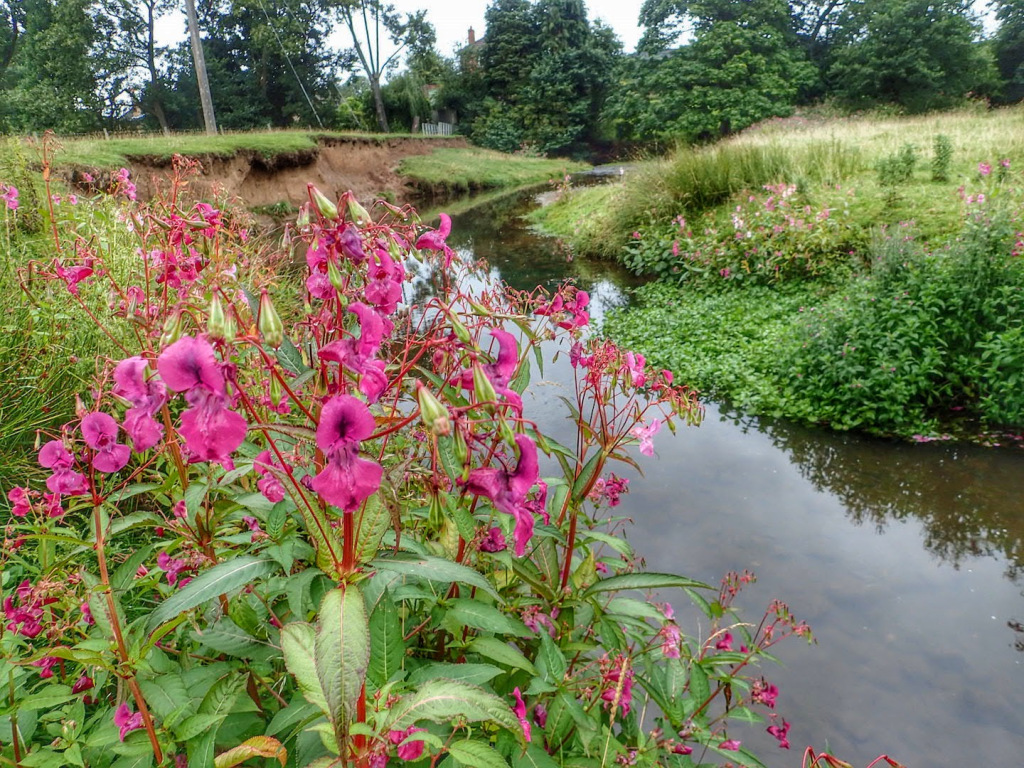“Ornamental plants: our future invaders?”
‘Hop over the Garden Fence and become aliens’.
Bangor Alumni and Phd Student Tomos Jones provided a riveting talk to a horticulturally minded audience, including students of Bangor University and the Friends of Treborth Botanical Garden.
Any ecologist knows the impact of invasive species, and any horticulturist knows the impact of weeds in the garden. Tomos Jones investigated which non-native ornamental plants have the potential to ‘Hop over the Garden Fence and become aliens’.
Invasive species are defined by Tomos as non – native plants which have naturalised in the ecosystem and cause a detrimental ecological impact.
Ornamental plants are non – natives that have been introduced intentionally for horticulture, most are important for British wildlife by increasing biodiversity and providing resources for pollinators. This is particularly true in urban areas!

Tomos approached the country’s Gardeners, to survey the nationwide opinion of the most nuisance ornamentals that are removed as weeds – explaining that Gardeners are on the ‘front line’ to observe potentially invasive characteristics of plants.
Young ornamental plants are often removed as weeds when the mother plant has readily self – seeded or grown ‘suckers’ in the lawn, boarders or pathways.
The plants reported by Gardeners were compiled by Tomos into a list of potentially invasive, worrying ornamentals.
It is important to identify these potential invasives before their disastrous dispersal becomes too late to stop, such as in the case of Rhododendron Ponticum and Himalayan Balsam.

However, the urgency Tomos communicated was not because of reckless planting by Britain’s gardeners, but climate change.
As Britain’s climate changes toward a dryer, hotter south east, and cooler wetter north west – the ornamental plants adapted to reproduce in the sunny Mediterranean have a ‘head start’ to colonise Britain’s countryside.
Tomos’s goal is to engage with Gardeners, to illustrate the responsibility both retailers and horticulturalists have to reduce the spread of potentially invasive ornamental plants from their gardens.
One tip was to ‘‘Dead head flowers before the plant can set seed’’
And to ”responsibly dispose of garden waste’’
The local Llyn Parc Mawr community woodland faces the task of removing invasive cotoneaster species, which colonised the wood following improper garden waste disposal in the 1970s.
Tomos has already educated the Gardeners of the RHS Chelsea Flower show 2019, through a spectacular Gold Medal Winning Discovery Zone exhibit ‘Ornamental plants: our future invaders?’, which saw circa 7000 visitors.

As a horticulturalist with experience working in a Botanical Garden, and I am currently curator of the Student- run ‘Healing Garden’ of Bangor University – I felt a personal responsibility to Tomos and Britain’s ecology, to rethink the ornamentals I encourage to establish in my gardens.
”I will now dead head the Crocosmias, contain the Lamb’s Ear and pull up the Buddeleia seedlings!”
My career direction has recently been heavily bedded in Wildlife Gardening and being an Ecological Horticulturalist – Tomos’s research has encouraged me to encompass not only bringing plants in the garden which benefits wildlife, but also to manage the potential invasives that can have a future detriment to the ecology of the countrysides, and perhaps join a similar campaign.